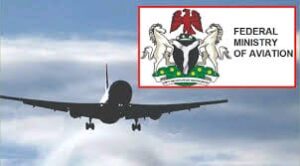

For much of the last decade, Nigeria’s aviation industry was stuck in a familiar loop of chronic under-investment, regulatory inconsistencies, and a reputation that deterred serious international lessors. However, when President Bola Ahmed Tinubu appointed Festus Keyamo as Minister of Aviation and Aerospace Development in August 2023, a new era began. Twenty months later, the sector has witnessed a significant transformation. Nigeria is no longer known primarily for high insurance premiums and grounded aircraft but for a deliberate, rules-based push to become West Africa’s most competitive aviation hub, instilling a sense of optimism for the future.
Keyamo’s first—and arguably most market-moving—intervention was the formal adoption of administrative rules for the Irrevocable De-registration and Export Request Authorisation (IDERA). This move, which removed ambiguity surrounding repossession rights, triggered an immediate five-point increase in the Cape Town Convention  (CTC) Compliance Index. Within twenty-four hours, Nigeria’s compliance index jumped from 70.5% to 75.5%, propelling the country into the CTC’s ‘high-compliance’ tier and removing Nigeria from the Aviation Working Group’s watch list. The implications are significant: CTC compliance directly affects lease rates, insurance premiums, and lessors’willingness to place modern aircraft in Nigerian fleets. In other words, a few percentage points difference translates into cheaper—and more abundant—capacity for domestic carriers.
(CTC) Compliance Index. Within twenty-four hours, Nigeria’s compliance index jumped from 70.5% to 75.5%, propelling the country into the CTC’s ‘high-compliance’ tier and removing Nigeria from the Aviation Working Group’s watch list. The implications are significant: CTC compliance directly affects lease rates, insurance premiums, and lessors’willingness to place modern aircraft in Nigerian fleets. In other words, a few percentage points difference translates into cheaper—and more abundant—capacity for domestic carriers.
Building on this momentum, in early 2025, Keyamo flagged off revised aviation insurance regulations that allow operators to cede up to 90 per cent of their hull risk to international markets. Aligned with CTC standards, this framework is expected to compress insurance costs and, by extension, reduce ticket prices that have historically outpaced the purchasing power of many Nigerian travellers. These adjustments not only improve financial metrics but also play an indirect role in safety: lower insurance costs free up capital that carriers can reinvest in maintenance, crew training, and modern equipment. The broader strategy is clear: restore investor confidence, tighten regulatory oversight, and make flying more affordable and safer for the average Nigerian.
Yet the minister did not stop at compliance. His playbook relies heavily on local content multipliers designed to keep more aviation-related revenue within Nigeria’s economy. Two initiatives stand out. The Fly Nigeria Act, currently before the National Assembly, would mandate that all government-funded travel—estimated at ₦420 billion annually—be booked on Nigerian flag carriers whenever viable point-to-point or code-share options exist. If passed, the Act promises a guaranteed revenue pipeline and higher fleet utilisation for domestic airlines that have struggled to fill seats at sustainable yields. Complementing this, the local catering mandate, effective January 1, 2025, requires every international carrier operating in Nigeria to source in-flight meals from Nigerian-certified caterers. Early compliance reports indicate a significant increase in order volumes, prompting new kitchen investments in Lagos and Abuja and creating over a thousand direct jobs within weeks of implementation. Together, these policies signal a deliberate shift from import-dependent aviation services toward local value-chain development—an approach that mirrors Tinubu-era reforms in oil and digital services, instilling a sense of optimism about the growth of Nigeria’s aviation sector.
At the same time, Keyamo placed a pronounced emphasis on elevating safety culture across airlines and agencies. Recognising that regulatory improvements are insufficient without robust operational practices, his ministry partnered with Boeing’s Global Learning Institute (BGLI) and Cranfield University to pilot a five-day “Advanced Leadership in Safety Excellence” program for executives and senior leaders from all domestic carriers. Drawn from the Seattle MOU, participants underwent immersive training in safety risk assessment, decision-making under pressure, and the implementation of Safety Management Systems (SMS). Early feedback indicates that at least three carriers have since established or updated their internal SMS frameworks, resulting in a 12-percent reduction in minor safety incidents during the first quarter of 2025 compared to the same period in 2024. By instilling a top-down commitment to safety, Keyamo has helped shift airline boardrooms toward framing operational risk as both a moral imperative and a business enabler.
Meanwhile, at Murtala Muhammed International Airport (MMIA) in Lagos, newly installed e-gates have reduced arrival processing times from an average of forty-five minutes to under fifteen minutes—reducing crowding and minimising fatigue-related errors among immigration officers. Coupled with the Ministry of Interior’s automated 48-hour e-visa platform and mandatory online landing-card system, immigration’s “open-skies, closed-loopholes” mantra has finally gained operational traction. Faster, more accurate passenger screening reduces the likelihood of human error, a frequent contributor to security breaches. Upcountry, the upgrade of Maiduguri’s Muhammadu Buhari Airport to full international status—scheduled to begin operations on January 1, 2025—anchors a strategic East-West belt linking the Chad Basin’s commerce corridors to Gulf carriers. Simultaneously, the foundation-laying for Abia State’s new airport at Ubaha Nsulu signals a willingness to diversify air-connectivity nodes beyond the traditional Lagos–Abuja–Port Harcourt triangle. These capital projects, some of which will be built or operated under public-private partnerships, are designed to stimulate local economic development, reducetravel times, and foster intra-regional trade while incorporating international best practices for runway safety and fire-rescue readiness.
Credibility on paper means little unless airlines can convert it into “metal”—that is, modern aircraft maintained to stringent safety standards. To that end, Keyamo has spent as much time courting stakeholders abroad as he has on tarmac inspections at home. Most visibly, he led a Nigerian delegation to the Boeing Lessor Forum during the Airline Economics Growth Frontiers Conference in Dublin, where he made a data-driven case for longer-term leases and lower security deposits. He emphasised the newly attained 75.5 per cent CTC rating and the cadre of senior managers returning from Boeing-Cranfield safety training, arguing that Nigeria’s improved safety culture and regulatory environment significantly reduce counterparty risk. In parallel, a memorandum signed in Seattle with Boeing’s BGLI has already produced tangible results: at least two airlines report upgraded flight-data monitoring (FDM) systems and stricter crew-rest compliance. Together, these efforts aim to equip younger, more fuel-efficient fleets with better standard operating procedures, an imperative as jet fuel remains tied to global oil prices, which are hovering near $90 per barrel.
Diplomacy has yielded tangible route and partnership gains as well. Following protracted negotiations, Keyamo’s team replaced Alitalia with Italy’s Neos SPA Airlines on the Milan–Lagos route, ensuring continuity of European connectivity despite Alitalia’s dissolution. In the Gulf, the minister successfully amended the Bilateral Air Services Agreement (BASA) with the United Arab Emirates, re-opening code-share channels and revising slot allocations that had been frozen during a 2022–23 dispute. The revised BASA also includes provisions for technical training, maintenance, repair, and overhaul (MRO) collaboration, as well as joint airworthiness surveillance, sending promising cadets to Emirates centres in Dubai for hands-on experience. Simultaneously, discussions with Algerian authorities culminated in an agreement to establish a tri-nation corridor linking Algeria, Nigeria, and Cameroon—both a political signal of regional integration and a practical new revenue stream for airlines hungry for short-haul traffic.
Behind the scenes, Keyamo has targeted grey-market leakage in private charter operations—a ministerial task force led by Capt. Ado Sanusi of Aero Contractors estimated that unauthorised charters were siphoning off ₦120 billion in annual revenue from government departments and high-net-worth travellers. Their recommendations—spanning mandatory manifest filing, transponder-based flight-tracking mandates, and stiffer fines for unlicensed operators—are now before the Nigerian Civil Aviation Authority (NCAA). If implemented and enforced, these measures could redirect substantial sums into legitimate operators and government coffers, simultaneously reducing the safety risks associated with poorly maintained, unregulated airframes.
Within the broader machinery of government, the Nigerian Airspace Management Agency (NAMA) earned ISO 9001 certification in December 2024 and received a SERVICOM Award of Excellence for customer service reforms. These institutional badges matter because they reassure foreign players—lessors, insurers, and airlines—that Nigeria’s air navigation services meet the stringent quality-management benchmarks they demand in Europe or the Gulf. Equally important, a stable, standards-driven NAMA reduces the risk of flight delays and cancellations tied to air traffic bottlenecks, directly affecting airlines’ on-time performance metrics and minimising the exposure of passengers and crew to avoidable risks.
Early economic dividends are already visible. Oxford Economics estimates that aviation’s share of Nigeria’s GDP could increase from 0.4 per cent to nearly 1 per cent by 2030 if Keyamo’s reforms continue to drive traffic growth. Job creation has accelerated: catering facilities have added over 1,200 roles since the implementation of the local-content directive, while ICT contractors report brisk demand for e-visa platform maintenance and real-time data analytics. Cargo volumes through MMIA have increased by 18 per cent year-over-year, primarily due to smoother customs integration and more predictable flight schedules. Tourist arrivals through international routes increased by 12 per cent in the first quarter of 2025 compared to the same period in 2024, indicating the ripple effects of lower ticket costs, improved safety culture, and enhanced brand perception.
Risks remain. Macroeconomic headwinds—especially foreign-exchange volatility—could erode lease-rate gains just attained. Structural challenges, from erratic power supply at secondary airports to security concerns in parts of the North-East, continue to inflate insurers’ war-risk surcharges. The Fly Nigeria Act must also withstand intra-party wrangling in the National Assembly; airlines reliant on government contracts may resist provisions that shift travel budgets to smaller, less established carriers. Finally, global aviation remains vulnerable to geopolitical shocks—any sudden oil price spike or North Atlantic crisis could quickly reverse hard-won traction.
Yet, judged against the baseline of August 2023, the trajectory is unmistakable. By combining compliance housekeeping, rigorous safety training, investor outreach, and uncomplicated pro-local policies, Festus Keyamo has transformed Nigeria’s aviation ministry from an afterthought into a potential linchpin of President Tinubu’s economic agenda. The next three years will determine whether these reforms reach cruising altitude, but for now, at least, the runway has never looked clearer.
Damilare , a communications strategist , lives in lagos and can be reached on penhallconsults@gmail.com
